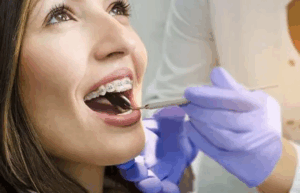Orthodontic treatment has come a long way in recent years. Today, people of all ages are choosing braces—not just for a straighter smile, but to improve their bite, prevent dental issues, and feel more confident in everyday life. With more discreet and customizable options available, getting braces is now easier and more accessible than ever.
If you’re thinking about orthodontic care, it’s helpful to understand how the process works from start to finish. That’s where a braces 101 overview like this comes in. From the different types of braces to how they’re applied and what daily life looks like with them, this guide breaks it all down in simple terms.
By the end, you’ll have a clear picture of what to expect—and a better idea of what might work best for your smile.
What Are Braces and What Do They Do?
Gentle but persistent pressure is the secret behind how braces transform your smile. These dental tools gradually guide teeth into proper alignment while correcting bite problems and improving overall dental function. The process unfolds over months or years, resulting in lasting improvements to both appearance and oral health.
Traditional braces consist of several key components working together:
- Brackets are small squares attached to each tooth.
- Archwires run through the brackets and provide the pressure needed to move teeth.
- Elastics (or rubber bands) may be added to adjust jaw alignment and support more complex corrections.
This integrated system gradually shifts teeth while reshaping the underlying bone structure. Such comprehensive correction makes braces effective not just for cosmetic improvements, but for enhancing how your teeth function when you chew, speak, and smile.
The alignment also simplifies dental hygiene, reducing risks of cavities and gum disease. Whether addressing crowding, spacing issues, or bite misalignment, braces create a healthier, more balanced smile designed to last.
Common Issues Braces Are Designed to Fix
Braces are used to correct a variety of alignment issues that can affect both how your smile looks and how your mouth functions. These problems can make it harder to chew, speak clearly, or maintain proper oral hygiene. Common conditions include:
- Crowded teeth – Not enough space in the jaw causes teeth to overlap or twist
- Gaps between teeth – Too much space between teeth, which can impact bite alignment
- Overbite – Upper front teeth extend too far over the lower teeth
- Underbite – Lower teeth sit in front of the upper teeth when biting
- Crossbite – Some upper teeth sit behind lower teeth instead of outside them
- Midline misalignment – The center of the upper and lower teeth doesn’t line up
- Jaw irregularities – Uneven jaw growth or alignment that affects bite and facial symmetry
Braces help correct these issues by gradually guiding the teeth and jaws into a more functional, balanced position.
Types of Braces You Can Choose From
Braces aren’t one-size-fits-all. Today’s orthodontic options offer more flexibility in terms of appearance, comfort, and functionality. Here are the most common types of braces and how they differ:
Metal Braces
These are the most traditional and widely used braces. Made from high-quality stainless steel, metal braces are strong, effective, and suitable for treating complex cases. They involve brackets attached to the front of each tooth and a wire that’s adjusted regularly to guide tooth movement.
Ceramic Braces
Ceramic braces work like metal ones but use clear or tooth-colored brackets to blend in with your smile. They’re a popular choice for teens and adults who want a less noticeable option. However, they can be slightly more fragile and require careful cleaning to avoid staining.
Lingual Braces
Lingual braces are attached to the back (tongue side) of the teeth, making them nearly invisible from the front. They function like traditional braces but may feel more awkward at first due to their placement. These are often chosen by patients concerned about how braces look.
Invisalign / Clear Aligners
Invisalign and similar clear aligners use a series of custom-made, removable trays to straighten teeth gradually. They’re almost invisible and can be taken out for meals and cleaning. While convenient, they require consistent wear—about 20 to 22 hours a day—to stay effective, making patient compliance essential.
What to Expect: The Braces Process from Start to Finish
Getting braces is a step-by-step process, and knowing what to expect can make it feel less overwhelming. Here’s how treatment typically unfolds:
• Consultation and Evaluation Your orthodontist will review dental records, take X-rays, and scan your teeth to assess your bite and alignment. This helps create a treatment plan tailored to your specific needs.
• Braces Placement During the first appointment, your teeth will be cleaned and dried. Brackets are attached to each tooth, and a wire is threaded through them to begin the alignment process.
• Regular Adjustment Visits Every 4 to 8 weeks, you’ll come in for small adjustments. The wire may be tightened or elastics changed to guide your teeth into better positions gradually.
• Braces Removal and Retainer Fitting Once your teeth have shifted into place, the braces are removed. You’ll then be fitted with a retainer to keep your results stable.
Knowing these basics is a key part of braces 101—a straightforward way to understand the full journey from start to finish.
The First Week with Braces: Adjusting to the Change
The first few days after getting braces can feel a little uncomfortable. It’s common to experience soreness or tightness in your teeth as they begin to shift. This sensation usually peaks within the first 2–3 days and gradually fades by the end of the week.
To ease the discomfort, try rinsing your mouth with warm saltwater a few times a day. It helps soothe irritation along the gums and cheeks. Orthodontic wax can also be applied to any brackets or wires that feel rough against the inside of your mouth.
It’s also normal to feel a slight change in how you speak or chew during this time. Sticking to soft foods—like mashed potatoes, smoothies, or yogurt—can make meals easier until your mouth adjusts.
Mild soreness is expected, but if you feel sharp pain, swelling, or anything that seems out of the ordinary, it’s a good idea to contact your orthodontist.
What You Can and Can’t Eat with Braces
What you eat during orthodontic treatment plays a big role in protecting your braces and keeping your mouth comfortable. Certain foods can damage brackets or wires, while others are easier to manage—especially in the early weeks.
Foods to Avoid
To keep your braces intact, skip anything sticky, hard, or overly crunchy. Common problem foods include:
- Gum and chewy candies
- Popcorn and chips
- Hard nuts and ice
- Raw carrots, apples (unless cut very small)
These items can break brackets or bend wires, delaying your treatment.
Safe Foods to Eat
Stick to soft foods, especially after adjustments. Braces-friendly options include:
- Yogurt, smoothies, and applesauce
- Mashed potatoes, cooked pasta, and rice
- Soft fruits like bananas or ripe melons
- Desserts like pudding or ice cream (without hard toppings)
These foods are gentle on your braces and make eating more comfortable while your mouth adjusts.
Cleaning and Daily Maintenance Tips
Good oral hygiene is even more important when you’re wearing braces. Brackets and wires can trap food and plaque, which increases the risk of cavities and gum problems if not cleaned properly.
Use a soft-bristled toothbrush or an orthodontic toothbrush to clean around each bracket. Angle the brush to reach above and below the wires, and brush for at least two minutes, twice a day. An electric toothbrush can also be helpful for thorough cleaning.
Flossing is still essential—even with braces. Use a floss threader or switch to a water flosser to clean between teeth and around hardware more easily.
Rinse with an antibacterial mouthwash daily to help prevent plaque buildup, especially in hard-to-reach areas. This also helps reduce inflammation around the gums.
To avoid stains or decalcification (white spots on teeth), limit sugary drinks and rinse after eating. Keeping your braces and teeth clean goes a long way in protecting your results.
Common Braces Issues You Can Handle at Home
Minor issues with braces can happen, but many are easy to manage until your next appointment.
If a wire comes loose, gently push it back into place using the eraser end of a pencil. For a loose bracket, leave it in place if possible and avoid hard foods.
Mouth irritation is common early on. Apply orthodontic wax to the brackets or wires causing discomfort to reduce rubbing.
While small fixes can help short-term, contact your orthodontist if something feels painful, you have swelling, or a piece breaks off completely—they’ll guide you on the next steps.
Lifestyle Tips for Braces Wearers
Wearing braces may take some getting used to, but a few small adjustments can make daily life easier.
If you play sports, wearing a properly fitted mouthguard helps protect your teeth and braces from impact. For those who play wind instruments, allow some time to adjust—most people adapt within a few weeks.
You might also notice slight changes in speech at first. Practicing out loud can help improve clarity and boost confidence.
Lastly, break habits like nail-biting or chewing on pens, as these can damage your braces and slow progress.
Retainers After Braces: Why They’re Essential
Once your braces come off, the work isn’t quite finished. Retainers play a critical role in keeping your teeth aligned after active treatment ends. Without one, teeth can slowly shift back to their original positions.
There are two main types: fixed retainers, which are bonded behind the teeth, and removable retainers, which you wear as instructed—often full-time at first, then just at night.
Proper care is key. Clean your removable retainer daily and store it safely when not in use. Wearing your retainer as directed ensures your new smile stays exactly where it should.
Long-Term Benefits of Getting Braces
Braces deliver benefits that extend far beyond simple cosmetic improvements. When teeth align properly, daily brushing and flossing become significantly more effective, dramatically reducing your risk of cavities and gum disease throughout life.
A corrected bite improves how your teeth distribute force when chewing, preventing uneven wear patterns that can lead to cracking or sensitivity years later. Many patients report noticing immediate improvements in comfort when eating certain foods after treatment, and some even find that chronic headaches diminish once their bite is properly aligned.
Well-positioned teeth are naturally less prone to chips and injuries during physical activities. And perhaps most importantly, many patients describe a newfound confidence in social situations—from feeling more comfortable in work presentations to smiling freely in family photos without self-consciousness.
Things to Know Before You Commit
Starting braces is a long-term commitment, and knowing what to expect can help you stay motivated throughout the process. Treatment often lasts anywhere from 12 to 24 months, depending on your specific needs.
You’ll need to attend regular adjustment appointments, usually every 4 to 8 weeks, to keep your progress on track. Skipping visits can delay your results.
It’s also normal to experience some minor discomfort, especially after new wires or adjustments—but this typically fades within a few days and is manageable with simple remedies like saltwater rinses or over-the-counter pain relief.
Costs and Insurance Options
The cost of braces can vary depending on the type of treatment and the complexity of your case. On average, you can expect to pay between $3,000 and $7,000. Metal braces tend to be on the lower end, while options like ceramic or clear aligners may cost more.
Many dental insurance plans cover a portion of orthodontic treatment, especially for children. It’s a good idea to check with your provider before starting.
To make treatment more accessible, most orthodontic offices offer flexible payment plans, interest-free financing, or accept Health Savings Accounts (HSA) and Flexible Spending Accounts (FSA).
Braces 101: Frequently Asked Questions
Still have questions? Here are some straight-talk answers to the most common concerns before starting treatment.
How long does treatment usually take? Most people wear braces for about 18 to 24 months, though your journey might be shorter or longer depending on what needs fixing.
Will they hurt? A little at first, yes—but this discomfort typically fades within a few days after each adjustment. Think of it as your teeth’s way of saying “we’re moving!”
Can adults get braces too? Absolutely! Nearly 25% of orthodontic patients today are adults. With options like clear aligners and ceramic braces, treatment can fit seamlessly into your professional life.
Do I still need to see my regular dentist? Definitely. In fact, those regular cleanings become even more important during orthodontic treatment to catch any issues early.
What happens if I break a bracket or wire? Don’t panic! Call your orthodontist to schedule a repair, and in the meantime, a little orthodontic wax can keep things comfortable until you get in.
Final Thoughts: What’s Next?
Now that you have a better understanding of how braces work, the different types available, and what to expect during treatment, you’re in a strong position to make informed decisions about your smile. From correcting bite issues to improving overall oral hygiene and confidence, braces offer more than just cosmetic benefits—they support lasting dental health.
Every smile is different, which is why the first step is always a personalized consultation. An orthodontist can evaluate your needs, explain your options, and help create a treatment plan that works for your goals and lifestyle.
Getting braces is a commitment, but one that pays off for years to come. With the right care and professional guidance, you’ll be on your way to a healthier, more confident smile that lasts long after the brackets come off. Many patients find that the investment transforms not just their dental health but also how they present themselves in everything from job interviews to dating to family photos—making it one of the most worthwhile investments in your overall well-being.
Schedule Your Braces Consultation Today
Thinking about braces? The best way to move forward is with expert guidance. At Dahar Orthodontics, our team will walk you through your options and create a treatment plan that fits your goals.
Take the first step toward a healthier, more confident smile.
Contact us now to book your consultation.





